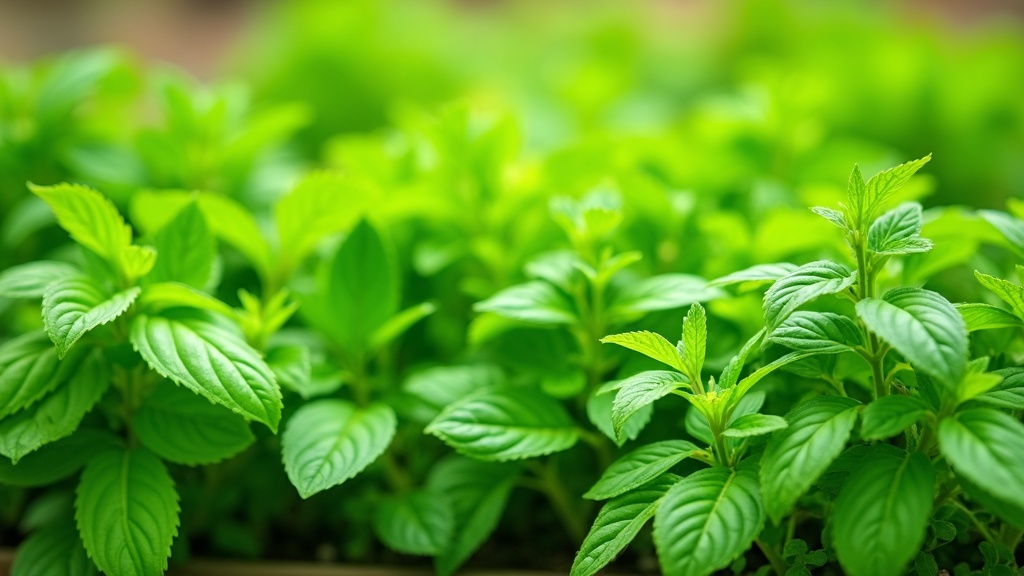Growing your own herbs is a fun and rewarding experience. Whether you have space for a sprawling garden or only a few pots on a sunny windowsill, fresh herbs can jump right into recipes and bring some next-level cool to everyday meals. They’re usually much easier to grow than most folks think, can be harvested continuously, and they don’t take much space or effort to keep looking vibrant. After years of tinkering with my own herb setups, I am consistently impressed by how much flavor you can add to your kitchen with just a handful of healthy plants.

Why Grow Herbs at Home?
Herbs bring a punch of fresh flavor, eye-catching pops of green, and they provide a naturally inviting scent to your home or garden. Keeping fresh herbs nearby can give you reason to cook more and try out adventurous recipes. Even if you live in an apartment with just a bright window, herbs like basil, mint, or parsley typically thrive in containers with just a bit of sunlight.
The National Gardening Association notes that fresh herbs consistently rank among the popular edible plants picked by new gardeners. Compared to trickier picks like tomatoes or fruit trees, herbs make it easy for beginners to kick things off. The wait from planting to picking is short, so you’re tasting your harvest faster than with most other plants.
Herbs also have the added perk of drawing in bees and butterflies—especially if you let a few go to flower. In fact, the more you harvest, the more the plants will happily grow back. It’s a win-win for anyone aiming to get the most out of their garden or kitchen windowsill without much trouble.
The Top 5 Herbs Every Gardener Should Grow
The world of herbs is massive, but some stand out as easier to care for and more versatile in the kitchen. Here are five go-to classics, chosen for taste, simplicity, and everyday usefulness:
- Basil: Pairs well with tomatoes, a must for pesto, and a cinch to grow.
- Parsley: The MVP of garnishes, but also delicious and vitamin-packed.
- Rosemary: Hardy and fragrant, ideal for roasts, bread, and potatoes.
- Thyme: Underrated but essential for soups, and keeps growing strong with little attention.
- Mint: Fantastic in drinks and desserts, stays lush and green through the season.
How to Get Started with Each Herb
If you’re just starting out, pick up some sturdy starter plants at your local nursery. Seeds work nicely too, especially for basil and parsley. Most herbs are forgiving—even if you miss a watering or two. Here’s a quick overview of what each herb likes best:
- Basil: Favorites warmth and sun, so find a bright spot. Water when the soil dries out and pinch the tops often for bushier growth.
- Parsley: Does well in sun or light shade. Starts off slow but is easy once established. Water regularly and harvest outer sprigs to keep leaves coming in.
- Rosemary: Loves sunny, dry spots and sandy soil. Let it dry between waterings. It does not like too much water, since root rot can be an issue.
- Thyme: Not fussy about soil, but drainage is key. Give it full sun and cut back often for bushier plants.
- Mint: Practically grows itself but spreads quickly. Always use a container or limit where it grows. Likes moist soil but not waterlogged roots.
Basil: The Kitchen Staple
This sun-loving herb shines in salads, sauces, and even cocktails. Basil grows fast. Pinch off the tops each week to keep your basil bushy and productive, tossing those fresh leaves into everything from caprese salads to homemade pesto.
One thing I’ve noticed: basil sends up flowers fast when heat spikes or water runs low. Once it flowers, the leaves may turn a little bitter, so frequent harvesting is key for the best flavor.
Give basil plenty of warmth (at least 6 hours of sun daily). If you’re growing indoors, a sunny windowsill works, and in winter, a little supplemental light can help keep it going strong.
Parsley: More than Just Garnish
When it comes to parsley, flatleaf wins the flavor race, though curly makes a handsome garnish. Parsley brings life to soups, salads, grains, and sauces, and it’s surprisingly nutritious. The leaves are packed with vitamins and can freshen your breath after a meal.
If left unpicked, parsley will shoot up tall stalks with tiny white flowers to please pollinators. Snip the outer leaves regularly to keep the harvest coming. It grows just as well on a patio as on a kitchen counter, as long as you ensure a few hours of sun each day.
Rosemary: The Evergreen Performer
With its woody stems and needlelike leaves, rosemary is a hardy perennial that looks almost like a mini shrub. It perfumes the breeze and can last for years with minimal care. One snippet often has enough flavor for an entire dinner roast or batch of bread.
In my experience, rosemary thrives when neglected a little—overwatering is the fastest way to run into problems. If you live in a cold area, bring rosemary inside in winter or grow it in a pot you can move wherever needed. It can start slow, but once it takes off, you’ll have plenty for picking all year.
Thyme: All-Purpose and Reliable
Few herbs are as flexible as thyme. Its small but potent leaves add zing to soups, roasted veggies, breads, and more. This plant is easygoing—give it decent sun and let the soil dry between drinks of water. Clip it back before it blooms to keep it tasting freshest, and outside, you’ll see it come back robustly each year.
It works well tucked along the edges of beds or cascading out of pots. Even if you have little time to spare, thyme keeps on thriving.
Mint: Freshness On-Demand
Mint practically grows itself, thriving in part shade but equally content with full sun. Water when the soil gets dry—avoid soggy conditions which can cause root problems. Mint spreads by under-the-soil runners, so a pot helps keep it where you want it.
Add fresh mint to iced tea, lemonades, or fruit salads. Harvest frequently for the best taste, and you’ll have a steady supply from spring until the first frost.
Common Herb Growing Questions
You may find yourself asking some questions in your herb-growing efforts. Here are helpful answers for common concerns:
Question: Can herbs grow indoors year-round?
Answer: Most common herbs thrive indoors if they get enough sun, especially basil, parsley, and mint. If you’re short on sunlight, a compact grow light will keep your herbs thriving even in winter.
Question: How can I prevent herbs from getting leggy or weak?
Answer: Snipping and harvesting often will keep them bushier. If plants stretch toward the light, move them to a brighter location for sturdier, healthier leaves.
Question: What should I do if my herbs flower too early?
Answer: Nip off any flower buds as soon as they show. For some herbs, like basil, flowering can make the leaves taste bitter.
Tips for Happy, Productive Herb Plants
- Choose Containers with Good Drainage: Herbs dislike soggy roots, so use pots with drainage holes.
- Feed Lightly: Too much fertilizer can dilute the taste. Use a weak liquid fertilizer about once a month during active growth.
- Encourage Air Circulation: Spacing plants out helps stop diseases before they start.
If you’re new to herbs or gardening overall, try just a couple of types at first so you don’t get overwhelmed. Once you’ve tasted the sharp, fresh flavor—trust me, you’ll want more. Fresh herbs are in a league of their own compared to storebought, and it’s fun to watch your little garden grow.
Ready to Grow?
You don’t need to have a green thumb or huge backyard to grow herbs. Select a few foundational options and soon you’ll be tossing fresh green into every meal. If you want to jump into companion planting or zero in on herbs for certain cuisines, jump into gardening books or local gardening groups for inspiration. Herbs like basil, parsley, rosemary, thyme, and mint are the perfect place to start—and you’ll be stunned at how much you can harvest, even from a small patch.
Once you begin, you might find yourself on the lookout for new varieties to try. Relax and enjoy the adventure. Plants are forgiving and only need a little light, water, and a pair of snips now and then. Here’s to homegrown flavor and easy gardening—your taste buds will thank you!
